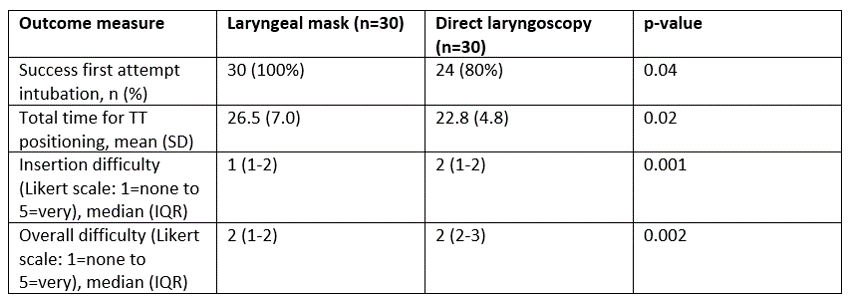Neonatology
Session: Neonatal Clinical Trials 2
481 - Successful intubation through laryngeal mask: a randomized controlled manikin trial
Saturday, May 4, 2024
3:30 PM - 6:00 PM ET
Poster Number: 481
Publication Number: 481.1226
Publication Number: 481.1226

Daniele Trevisanuto, MD (he/him/his)
Associate Professor
University of Padova
Padova, Veneto, Italy
Presenting Author(s)
Background:
Background: endotracheal intubation is an important life-saving procedure for critically ill neonates. Furthermore, the procedure times are often longer than recommended by international guidelines and repeated intubation attempts are associated with adverse events in instable neonates.
Objective: We compared success and time of intubation though intubating laryngeal mask vs direct laryngoscopy in a manikin simulating an extremely low birth weight infant. In addition, we assessed operator’s opinion on the procedure.
Design/Methods: This is an unblinded, randomized, controlled, crossover (AB/BA) pilot trial of intubation procedure through intubating laryngeal mask (air-Qsp®) vs direct laryngoscopy in a manikin simulating a full-term newborn (Laerdal, Stavanger, Norway). The primary outcome measure was the intubation success rate at the first attempt. Secondary outcome measures were the total time needed for the endotracheal tube positioning (calculated as the sum of the time of device positioning in all attempts), and the participant's opinion on using the device (evaluated using a Likert scale).
Results: Thirty healthcare givers were participated in the study. Success rate was higher with laryngeal mask compared to direct laryngoscopy (100% vs. 80%, p=0.04). Total time for TT positioning was longer with laryngeal mask compared to direct laryngoscopy (mean 26.5 vs. 22.8, p=0.02). Participants found intubation procedure through intubating laryngeal mask less difficult than using direct laryngoscopy (insertion difficulty p=0.001 and overall difficulty p=0.002) (Table 1).
Conclusion(s): In a manikin model, intubation through a laryngeal mask was more successful and was favored by the participants in comparison to intubation by using direct laryngoscopy. An intubating laryngeal mask could be considered useful in settings where the skill of intubation is limited or lacking. Further studies are needed to assess the clinical implications of these findings.

